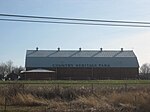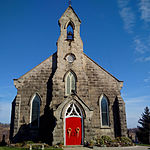Kelso Conservation Area

Kelso Conservation Area is located near Milton, Ontario on the Niagara Escarpment and is owned and operated by Conservation Halton. This park has an area of 3.97 square kilometres and contains Lake Kelso which was built for flood control of Sixteen Mile Creek and has a sandy beach for swimmers in the summer with a food concession and board walk along the lake to the Boat Rental shop which offers the rentals of canoes, kayaks, paddle boards, paddle boats and is also open to any non-motorized watercraft. The Park also offers 20 campsites, 18 reserve-able picnic sites, and two camping/picnic mixed sites. Glen Eden Ski & Snowboard Centre is located in the park and offers downhill skiing, snowboarding and tubing during the winter months. In addition, the Halton Region Museum is also located on the Kelso grounds. The park also features marked mountain biking and hiking trails. Lake Kelso also provides a natural, economical and convenient source of very cold water for snow-making for the Glen Eden Ski & Snowboard Centre; negating the need to use water from Halton's main line utility service.
Excerpt from the Wikipedia article Kelso Conservation Area (License: CC BY-SA 3.0, Authors, Images).Kelso Conservation Area
Kelso Road,
Geographical coordinates (GPS) Address Nearby Places Show on map
Geographical coordinates (GPS)
| Latitude | Longitude |
|---|---|
| N 43.511111111111 ° | E -79.945833333333 ° |
Address
Kelso Road
L9T 2X7
Ontario, Canada
Open on Google Maps







